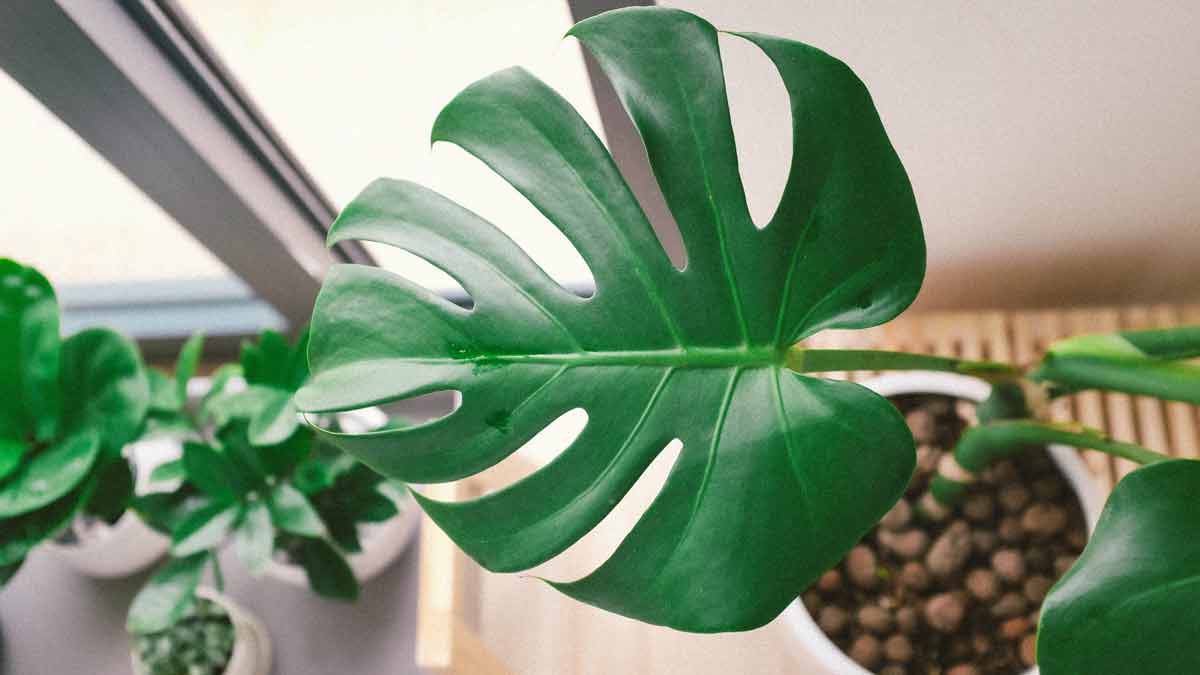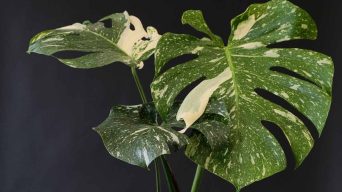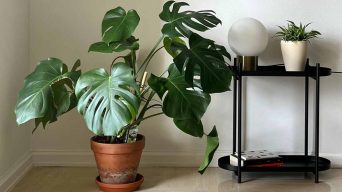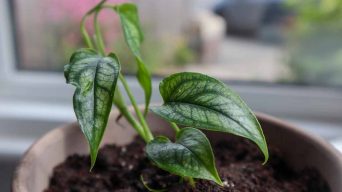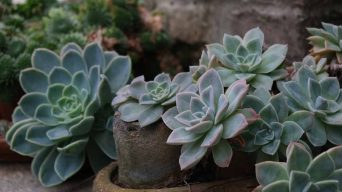LECA balls are used as a growing medium for plants to prevent root rot, acidity, and pests. They are very porous, which helps with drainage and aeration. Monstera plants can be grown in LECA, which is one of the most successful ways to grow this plant using the semi-hydroponic method.
Growing Monstera plants in Leca has become increasingly popular among plant enthusiasts thanks to its numerous benefits and ease of use.
In this ultimate guide, we’ll explore the ins and outs of Leca as a growing medium for Monstera, providing you with valuable tips and techniques for successfully nurturing these stunning indoor plants.
So if you want to take your Monstera game to the next level, keep reading as we delve into this exceptional soilless alternative!
Understanding Leca And Monstera
Leca is a soilless growing medium made from clay.
It is an excellent choice for cultivating Monstera plants because it provides better drainage, aeration, and nutrient availability than traditional soil.
What Is Leca And Why Use It For Growing Monstera Plants?
LECA, short for Lightweight Expanded Clay Aggregate, is a unique soilless growing medium consisting of small, round clay balls that have been heated and expanded to form porous pellets.
These lightweight yet sturdy pellets offer exceptional drainage while retaining moisture and nutrients essential for healthy plant growth.
As a result, LECA has become an increasingly popular choice among indoor gardeners, especially when it comes to growing Monstera plants.
Growing Monstera in LECA provides numerous advantages over traditional soil-based methods.
One of the primary benefits is its impressive ability to prevent overwatering and subsequent root rot – a common issue many Monstera enthusiasts face using potting mixtures.
This is achieved through increased air circulation around the roots, which allows them to “breathe” better and reduces the risk of suffocation or disease caused by waterlogged conditions.
Furthermore, because LECA doesn’t break down like organic matter found in most soils (e.g., peat moss), it offers excellent long-term stability required for robust root development.
So whether you’re looking to propagate cuttings or help your existing Monstera thrive in a new environment, consider giving LECA a try!
Pros And Cons Of Growing Monstera In Leca Vs. Soil
Growing Monstera in Leca and soil both have their advantages and disadvantages. Here’s a comparison to help you decide which method best suits your needs as a plant enthusiast.
| Pros | Cons | |
|---|---|---|
| Leca | Improved drainage and aeration, reducing the risk of root rot | Requires a learning curve for proper watering and fertilizing |
| Lightweight and reusable, making it eco-friendly | Not suitable for all plant types, as some prefer soil | |
| Easier to control and monitor water levels and nutrient uptake | Can be more expensive than traditional soil | |
| Keeps pests and diseases at bay, resulting in healthier plants | Requires regular maintenance to avoid the buildup of algae | |
| Soil | Provides a natural environment for Monstera growth | Poor drainage and aeration can cause root rot |
| More affordable than Leca | Heavier than Leca, making it difficult to move the pot | |
| Suitable for a wide variety of plants | Prone to pest infestation and diseases | |
| Requires less maintenance once the correct watering and fertilizing schedule is established | Less control over water levels and nutrient uptake |
Benefits Of Growing Monstera In Leca
There are several benefits to growing Monstera in Leca, including:
- Improved drainage: The clay balls used in Leca provide excellent drainage for the Monstera plant, reducing the risk of root rot and other issues caused by waterlogged soil.
- Reduced watering frequency: Leca retains moisture well, so you may need to water less frequently than traditional soil-based methods.
- Better nutrient absorption: The porous nature of Leca allows for better aeration and nutrient uptake, leading to healthier and faster-growing Monstera plants.
- Cleaner and more hygienic: Unlike soil that can harbor pests and diseases, Leca is sterile and virtually free from contaminants, creating a cleaner environment for your Monstera plant.
- Versatile growing medium: Leca can be used in various hydroponic setups, providing flexibility in your Monstera plant’s growth.
- Cost-effective: While the initial investment cost for Leca may be higher than traditional potting soil, it lasts longer and is reusable, making it a cost-effective choice in the long run.
How To Grow Monstera In Leca
Learn how to successfully grow Monstera plants in Leca with these simple steps.
1. Preparing The Monstera For Leca
To successfully grow a Monstera plant in LECA, preparing it correctly before planting is essential.
Follow these steps to prepare your Monstera:
- Check your Monstera for pests and diseases: Before transplanting into LECA, scrutinize your plant for any signs of pests or diseases. If you notice any issues, address them before proceeding.
- Prune back damaged foliage: Trim away any yellowed, browned, or damaged leaves on the plant. This will encourage healthy growth and prevent the disease from spreading.
- Water the Monstera thoroughly: Give the plant a good soak with water to ensure its roots are hydrated before transplanting.
- Let the soil dry out slightly: Allow some time for the soil to dry out slightly; this will make it easier to remove excess soil when placing the plant into LECA.
- Remove old soil from roots: Gently remove as much old soil around the roots as possible, careful not to damage them.
- Rinse off remaining soil with water: Rinse off any remaining clinging soil using room temperature water; be sure not to use hot or cold water as that can shock delicate roots.
Following these steps, you can help ensure your Monstera is healthy and ready for its new home in LECA.
2. Preparing The Pot For Leca
Before planting your Monstera in Leca, preparing the pot for optimal growth is important.
First, choose a well-draining pot with a drainage hole at the bottom. This will ensure excess water can easily escape and prevent root rot.
Next, add a layer of sphagnum moss or other organic matter on top of the Leca at the bottom of the pot. This helps keep moisture levels balanced and supports healthy root growth.
When adding the Leca into the pot, fill up about 1/3 to 1/2 of the container’s depth with clay balls. This will support your Monstera as it grows and allow adequate airflow around its roots for healthy development.
Following these simple steps, you can create an ideal environment for your Monstera in Leca that promotes strong growth and thriving health!
3. Laying The Leca At The Bottom Of The Pot
To start growing your Monstera in Leca, it’s important to lay the clay balls at the bottom of the pot.
Here are some tips for laying the Leca:
- Cover the drainage hole: Use a mesh or coffee filter to cover the drainage hole at the bottom of your pot to prevent soil from mixing with the Leca.
- Add a layer of Leca: Pour a layer of Leca onto the mesh or coffee filter, ensuring it covers about one-third of the pot’s height.
- Rinse the Leca: Before planting your Monstera, rinse the clay balls thoroughly with water to remove dust and impurities.
- Spread evenly: Distribute and spread out a layer of clean and wet sphagnum moss over your layer of Leca. This helps create a barrier between your plant roots and moisture-loving clay pellets.
4. Planting The Monstera In Leca
One of the benefits of growing Monstera in Leca is that it allows for better drainage and root aeration.
When planting the Monstera in Leca, prep the pot with a layer of clay balls at the bottom to promote proper drainage.
Next, soak the Leca pellets in water for a few hours before pouring them into the pot and spreading them evenly.
Then, gently place your Monstera plant on top of the Leca layer and fill any gaps around it with more pellets until it’s secured.
Once planted, add enough water to cover just under half of your pot’s reservoir tray or below its drainage hole.
Eventually, as roots grow down toward the water level, they’ll absorb moisture directly from their new home.
Be sure not to overwater or let your Monstera sit in standing water to avoid root rot issues.
Tips And Techniques For Successfully Growing Monstera In Leca
Learn how to grow Monstera plants in Leca successfully with these essential tips and techniques.
Ensure proper watering, lighting, and temperature, monitor for drainage, and protect your plant against pests and diseases.
1. Monitoring For Proper Drainage
Proper drainage is essential when growing Monstera in Leca.
Without it, the roots may become waterlogged and develop root rot, which could eventually lead to plant death.
To ensure proper drainage, a few things need to be checked regularly.
First, ensure a drainage hole at the bottom of the pot filled with clay pebbles or perlite.
If not, create one using a drill or some other tool.
Next, check that the water runs out freely from the pot after watering your Monstera.
If there’s no run-off or it takes too long for all of it to drain out, adjust how much you’re watering and consider switching up the soil mix.
To further monitor proper drainage, watch for signs of overwatering, such as yellow leaves, wilting foliage, or slow growth rates accompanied by fungal growth on top of your soil mix, indicating excessive moisture retention within your Leca layer.
Additionally, look out for pesky fungus gnats that thrive in moist environments like stagnant water-beneath pots with poor drainage leading to their larvae eating away at roots, particularly during its delicate stages.
2. Adjusting The Amount Of Water And Fertilizer
To grow Monstera in Leca successfully, it is crucial to appropriately adjust the amount of water and fertilizer.
Although Monstera plants thrive in humid environments, overwatering can cause root rot, leading to yellowing leaves and stunted growth.
To avoid this issue, ensure the pot has proper drainage holes to drain excess water quickly.
It is also advisable to check soil moisture levels frequently before watering your plant.
When it comes to fertilizing your Monstera in Leca, less is more.
Overfertilization can lead to a buildup of salts in the growing medium that may harm your plant’s roots.
Instead, opt for a balanced organic or hydroponic fertilizer explicitly formulated for Monstera plants once every two weeks during their active growth period (spring and summer).
However, if you notice any signs of nutrient deficiencies, such as yellowing or spotted leaves, consider adjusting the frequency of fertilization accordingly.
3. Providing Adequate Light
Giving your Monstera adequate light is crucial to its growth and overall health.
These plants are native to tropical rainforests and require bright, indirect sunlight.
Placing your Monstera near a window with filtered light or using a sheer curtain can provide the right amount of light without direct exposure.
If you notice that your Monstera leaves are turning yellow or brown, it may be receiving too much direct sunlight.
On the other hand, if your plant isn’t growing as quickly as you’d like it to or has small leaves, it may not receive enough light.
Consider adjusting its location or investing in grow lights to supplement natural lighting.
Remember that every home is different and requires some trial and error when determining proper lighting conditions for indoor plants.
However, by providing ample but not excessive amounts of bright indirect light, you’ll set yourself up for success in growing healthy and thriving Monstera plants in Leca clay balls.
4. Temperature Requirements
To grow Monstera in Leca successfully, it is essential to maintain consistent temperatures.
These plants prefer a warm and humid environment with a temperature range of 60-75°F.
Monstera is sensitive to cold drafts or sudden temperature changes, which can cause stress on the plant, leading to stunted growth.
Inconsistent temperatures can also affect the development of new leaves in Monstera.
If the temperature drops below 60°F for an extended period, it can slow down leaf production or even stop it entirely.
Therefore, keeping your indoor temperature consistent will help support healthy growth and promote optimal foliage development.
It’s crucial to note that too much heat may not be great for Monstera, either.
Temperatures above 85°F can damage and scorch the leaves resulting in brown spots or edges.
So when growing this beautiful plant in Leca, maintaining a balanced room temperature is critical for successful growth and avoiding any environmental stresses that could damage your precious Monstera plant.
5. Preventing Pests And Diseases
One of the biggest challenges when growing Monstera in Leca is preventing pests and diseases that can damage or kill the plant.
One common issue is fungus gnats, which thrive in moist soil or growing media like Leca.
To combat this problem, it’s essential to keep your Monstera potting mix dry between watering sessions and avoid overfertilizing your plant.
Another potential issue is root rot, which occurs when the roots are constantly exposed to moisture.
This condition can lead to wilting leaves or a yellowing appearance.
Add perlite or organic matter like coco coir to your Leca mix to prevent root rot for better drainage and air circulation around the roots.
Additionally, avoid placing your Monstera plant near cold drafts or overly humid environments, as this can encourage fungal growth on its foliage.
Propagating Monstera In Leca
Propagating Monstera in Leca is a simple and effective way to grow new plants.
Here are some tips for successfully propagating Monstera in Leca:
- Cuttings: Take a stem cutting from the parent plant with a few nodes and leaves attached. Place the cutting in fresh water or directly into moistened Leca until roots have developed.
- Water vs. Leca: While Monstera can be propagated in water, using Leca allows for better oxygenation of the roots and can promote faster growth.
- Rinse the Leca: Before placing the cutting into the Leca, rinse it thoroughly to remove any debris or dust particles.
- Keep the Cutting Moist: To encourage root growth, moisten the cutting by misting it daily or covering it with a clear plastic bag.
- Potting Up: Once sufficient roots have developed, pot up the new plant in fresh Leca or soil mix and continue caring for it as you would an established Monstera plant.
By following these tips, you can easily propagate your Monstera plants in Leca and enjoy watching them thrive!
Common Issues And Troubleshooting Tips
It’s not uncommon to encounter issues while growing Monstera in Leca.
Here are some common problems and troubleshooting tips:
- Root Rot – Overwatering can lead to root rot, which yellowing and wilting leaves can identify. To prevent this, ensure the pot has proper drainage holes and doesn’t overwater the plant.
- Lack of Drainage – Make sure there is enough Leca at the bottom of the pot to allow for proper drainage and check that the roots are not blocking the drainage holes.
- Inadequate Lighting – Monstera plants need bright, indirect light to thrive. Move your plant to a brighter spot if you notice pale or yellow leaves.
- Pests – Fungus gnats and spider mites are common pests that can affect Monstera plants. Use neem oil or insecticidal soap to get rid of them.
- Potbound Roots – If your plant’s growth has slowed down, it may be time to repot it into a larger container with fresh Leca or soil mix.
- Nutrient Deficiencies – Yellowing leaves may also indicate nutrient deficiencies, especially if they’re older leaves towards the bottom of the plant. Add hydroponic fertilizer or organic matter to your Leca mix or switch back to the soil for additional nutrients.
Addressing these issues promptly ensures your Monstera plant stays healthy and happy in its Leca home.
Final Thoughts
Growing Monstera in Leca can be an excellent option for plant enthusiasts looking to try something new.
It provides a soilless option that can help prevent common issues like root rot and offers better nutrient availability and overall growth potential.
Following the tips and techniques outlined in this guide, you can successfully grow your own Monstera in Leca and enjoy its beautiful foliage for years.
So go ahead and give it a try – your Monstera will thank you!

